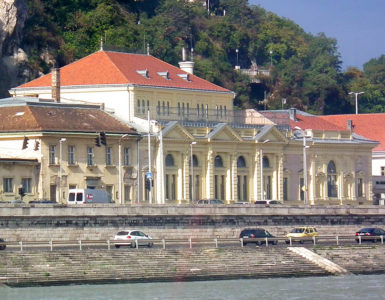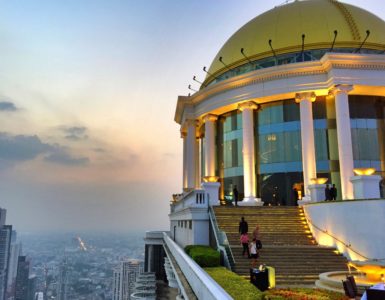This time of year — the dry season — the northern Thai landscape is awash with color: dusty greenery, monster azaleas, wild poinsettias, and willowy vines flocked with fiery orange blossoms. While driving through the countryside, you’ll also see dozens of temples, almost all of which will feature bright green roofs edged with golden serpents, saffron walls, and ruby red doors.
This riot of color makes Wat Rong Khun, or the White Temple, even more startling. The brainchild of local artist Chalermchai Kositpipat, the White Temple defies — or, more precisely, reinterprets tradition, because it is, as the name implies, simply white.
And not just white — blindingly white. Thanks to tiny mirrored tiles inlaid in the stark, white concrete and marble used in its construction, the Temple is a blinding, maddening, impossible shade of white. It glitters in the tropical sun like a structure carved from the purest ice, reflecting the light of the sun millions of times over.
This brightness does not photograph well. Truth is, the temple is difficult to see, even when you’re there, simply because the human eye is not prepared to deal with that kind of radiance. As you approach it, straining to see it, you feel an urge to turn away — like Moses, compelled to avert his glance from the Face of God.
Once up close — and through squinted eyes — the artist’s genius becomes clear. At the core of all that light is a salvation myth sculpted in white concrete. To enter the temple, visitors must literally go to Hell — because the entryway itself is a nightmarish image of souls in eternal torment. Hundreds of imploring hands reach up from the yawning depths. If you are brave enough to stare down into this jungle of upraised limbs, you will see the faces of the lost, their expressions twisted by agony, staring back up at you.
From here, a gleaming bridge crosses a river — silver water, brimming with ivory koi — and deposits pilgrims in heaven: a perfectly symmetrical, vaguely serpentine paradise that houses, at its center, the White Temple itself.
Inside the temple, the white motif ends, and you are immersed in hallucinogenic colors. Against a sea of coiling oranges, reds, and golds, elaborate Thai watercraft carry redeemed souls on a voyage into the stars. This mural incorporates many elements of the sacred art found in temples all over Thailand … and more. To the right of the doors, we see the twin towers of the World Trade Center, ablaze with light and trailing black smoke. In the sky above, a futuristic space battle rages, complete with gleaming rocket ships and alien space craft. On the left, standing in the wake of a passing planet, we see Keanu Reeves as Neo from The Matrix; not far away, Superman flies to his aid.
All of this is rendered in a hyper-realistic style — brightly colored, but never cartoonish … exaggerated, but recognizable. It is the eternal war between good and evil divorced from quaint myths about monkey warriors and recast in the sci-fi paradigm of the twenty-first century.
Back outside, having passed through hell and arrived in heaven, we leave to wander the immaculately landscaped grounds.
The White Temple is not so much a place as it is an experience: a fevered dream of hell, a gleaming dream of heaven, and a monument to the conflict at the base of all reality, frozen in a sea of stone.





Add comment